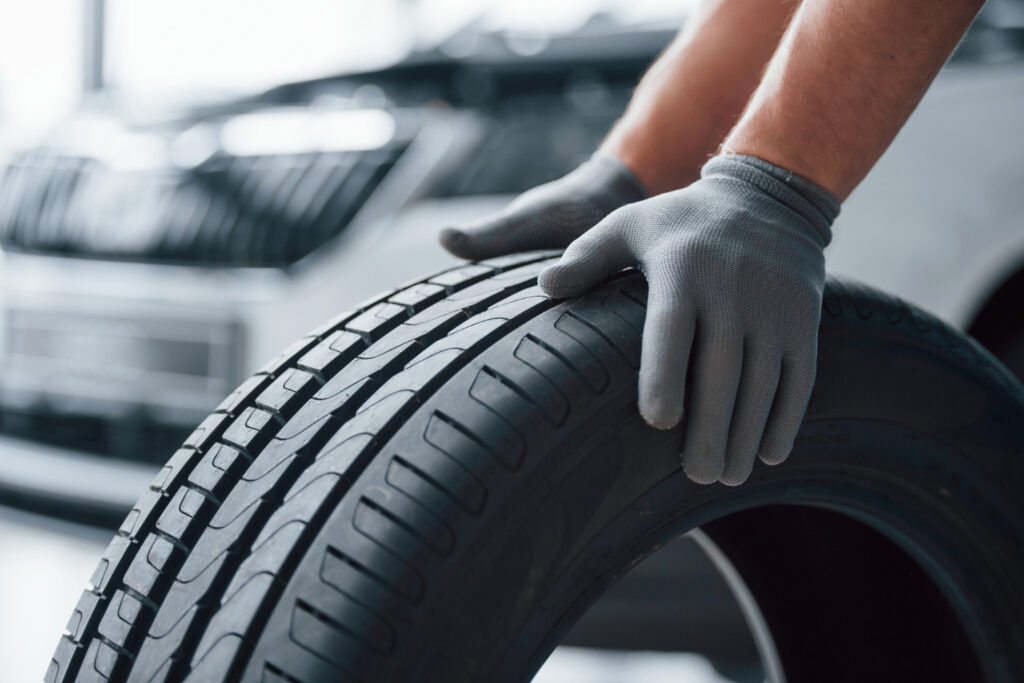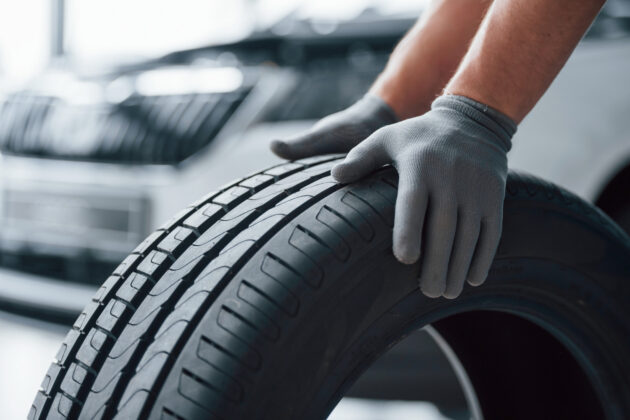
Driving is liberating, but it comes with responsibilities. One crucial aspect often overlooked is the condition of your car’s tyres. Neglecting them can lead to safety hazards and unexpected breakdowns. In this blog post, we’ll explore the subtle signs that indicate your four wheels need a new set of shoes.
Table of Contents
- 1 1. Tread Talk: Is it Time to Tread Lightly?
- 2 2. Uneven Wear Patterns: The Unequal Journey of Tyres
- 3 3. Bulging Bumps: When Tyres Get Lumpy
- 4 4. Aging Gracefully or Not: The Impact of Tyre Age
- 5 5. Punctures and Nails: The Unwanted Hitchhikers
- 6 6. Vibrations: When the Road Sings a Jittery Tune
- 7 7. Noisy Tyres: The Soundtrack of Wear and Tear
- 8 8. Handling Woes: The Drift Away from Smooth Driving
- 9 9. Warning Lights: When Your Car Speaks in Symbols
- 10 10. Sidewall Inspection: Where the Rubber Meets the Road
- 11 11. Treadwear Indicator: Telling Tales on Tyres
- 12 12. Traction Test: The Slippery Slope of Worn Tyres
- 13 13. Excessive Heat: When Tyres Get Hot Under the Collar
- 14 14. Recurrent Flat Tyres: A Redundant Roadside Companion
- 15 15. Fuel Efficiency Drop: The Silent Consequence of Worn Tyres
- 16 Conclusion
1. Tread Talk: Is it Time to Tread Lightly?
Your tyres’ tread depth is the first indicator of their health. Grab a penny, flip it upside down, and insert it into the tread. If you can see the top of Lincoln’s head, it’s time for new tyres. Thinning tread is a red flag, signaling reduced traction and compromised safety, especially in wet or slippery conditions.
2. Uneven Wear Patterns: The Unequal Journey of Tyres
Take a moment to inspect your tyres. Are they wearing uniformly, or do you notice uneven patterns? Uneven wear suggests alignment issues, tyre imbalance, or even suspension problems. Regularly check for irregularities to address potential issues early on.
3. Bulging Bumps: When Tyres Get Lumpy
Imagine your tyre as a perfectly round companion on the road. Now, if you notice any bulges or bumps, it’s a cause for concern. These protrusions could indicate internal damage, making your tyre more prone to a blowout. Don’t ignore the lumps; replace the tyre promptly with professionals like Coleman Tyres.
4. Aging Gracefully or Not: The Impact of Tyre Age
Tyres age, regardless of how much tread they have left. Exposure to the elements, temperature fluctuations, and the passage of time can affect rubber quality. If your tyres are more than six years old, it’s advisable to consider replacements, even if the tread appears sufficient.
5. Punctures and Nails: The Unwanted Hitchhikers
Nails, screws, or shards of glass – tyres attract these like magnets. While a puncture doesn’t necessarily mean immediate replacement, it’s crucial to assess the damage. If the puncture is near the sidewall or larger than a quarter inch, a new tyre is likely in order.
6. Vibrations: When the Road Sings a Jittery Tune
Smooth driving is what we all desire. If you feel unusual vibrations while driving, it could be a sign of tyre imbalance or misalignment. These vibrations, often felt through the steering wheel, indicate a need for tyre inspection and potential replacement.
7. Noisy Tyres: The Soundtrack of Wear and Tear
Your tyres might be trying to communicate with you through noise. Excessive road noise could mean uneven wear or issues with the tyre’s internal structure. Listen carefully; if the volume increases with speed, it might be time to swap those tyres for a quieter set.
8. Handling Woes: The Drift Away from Smooth Driving
Have you noticed a change in your car’s handling? Difficulty steering, pulling to one side, or a general lack of responsiveness can be attributed to tyre issues. Before assuming it’s a major problem, check your tyres for visible signs of distress.
9. Warning Lights: When Your Car Speaks in Symbols
Modern cars are equipped with tyre pressure monitoring systems. If the warning light on your dashboard resembles an exclamation mark inside a tyre, it’s time to pay attention. Ignoring this warning may lead to decreased fuel efficiency and compromised safety.
10. Sidewall Inspection: Where the Rubber Meets the Road
Examine the sidewalls of your tyres for bulges, cuts, or cracks. Damaged sidewalls can weaken the structural integrity of the tyre, increasing the risk of a blowout. Regularly inspecting the sidewalls ensures early detection of potential issues.
11. Treadwear Indicator: Telling Tales on Tyres
Inspect the treadwear indicator bars moulded into the tread grooves. These indicators become visible as the tread wears down. If you notice them level with the tyre’s surface, it’s a sign that your tyres have reached the end of their roadworthy journey. Ignoring this indicator risks compromised traction and handling – a clear signal it’s time to invest in a fresh set of tyres.
12. Traction Test: The Slippery Slope of Worn Tyres
Take notice of how your car handles on wet or slippery surfaces. If you experience difficulty maintaining traction, especially during turns or sudden stops, it’s a telltale sign of deteriorating tyre performance. Your tyres might be losing their grip, emphasizing the urgency of considering replacements to ensure optimal safety in varied driving conditions.
13. Excessive Heat: When Tyres Get Hot Under the Collar
After a long drive, touch your tyres. If they feel excessively hot, it could indicate overinflation, underinflation, or alignment problems. Overheating not only accelerates tyre wear but also raises the risk of a blowout. Monitoring your tyres’ temperature can be a simple yet effective way to gauge their overall health.
14. Recurrent Flat Tyres: A Redundant Roadside Companion
Are you finding yourself changing a flat tyre more often than not? While occasional flats are inevitable, frequent punctures may suggest your tyres are more susceptible to damage. Investigate the cause, but be prepared to consider new tyres if the recurring flats become a frustrating routine.
15. Fuel Efficiency Drop: The Silent Consequence of Worn Tyres
Keep an eye on your fuel efficiency. If you notice a sudden drop in miles per gallon, your tyres could be the culprits. Worn-out or underinflated tyres increase rolling resistance, forcing your engine to work harder and consume more fuel. Upgrading to new, fuel-efficient tyres can make a noticeable difference in your overall gas mileage.
Conclusion
Your car’s tyres are its shoes, and just like worn-out shoes, worn-out tyres can lead to discomfort and danger. Regular inspections and proactive maintenance can save you from unexpected roadside troubles. So, the next time you hit the road, spare a thought for your trusty tyres – they deserve a little attention too. Remember, a well-maintained car is a happy car, and happy cars make for happy drivers. Stay safe, keep rolling, and don’t forget to give your tyres the TLC they deserve.
